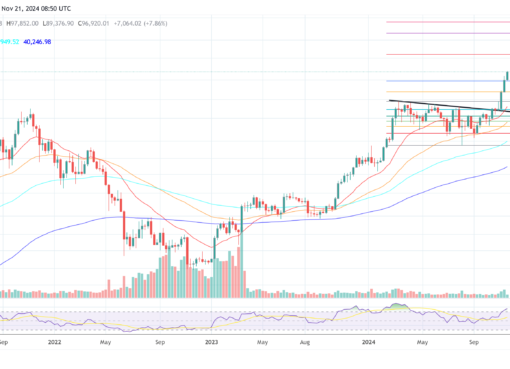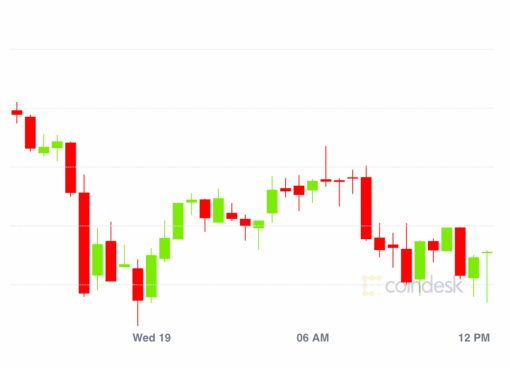For ages, humans have relied on the simple concept of ‘trading’ to get around. In fact, trading is the central idea behind every economic society and financial institution in the world. It essentially is the exchange of goods and/or services between two or more entities. People and businesses have created fortunes by this simple idea, and while it is a vast concept, two types of trading stand in the center in helping to create enormous wealth. These are stock trading and crypto trading.
While a layman may confuse between the two, thinking that investing in cryptocurrencies is just like buying stocks, they are two different poles of the trading spectrum. Stock trading is the more traditional of the two that has been around for more than a century. Crypto trading, on the other hand, is a novel trading technique that involves the trading of cryptocurrencies – digital or virtual currencies that do not have a physical existence but are present virtually. These are secured by cryptography to eliminate the risk of fraudulent activities and double-spend.
For some years, the question of whether to invest in stocks or cryptocurrencies has been making investors scratch their heads with confusion. It is important to assess overall portfolio goals and risk tolerance before investing. Learning about cryptocurrencies like Bitcoin will help in assessing the overall risk and suitability of the investment.
Risk Assessment
It’s a hard fact that investment in markets carries risk because the market could crash anytime. Companies could go bankrupt. Weighing risk is important when you decide to add different assets to your portfolio.
Stocks are different because there is some guidance you can use to get an understanding of where a price might go. Cryptocurrencies are speculative, completely based on supply and demand. Cryptocurrencies like Bitcoin unlike other currencies like the dollar or gold is a much smaller market with regard to its overall size, so it’s more subject to swings in the market.
Bitcoin is a relatively new development and isn’t yet widely adopted. That carries a risk as the cryptocurrencies could be dominated by other currencies and could be regulated out of existence.
With stocks, even though there are ups and downs and some volatility in the short-term, there’s more long-term and historical support. Unlike cryptocurrencies which is more volatile and there’s no natural way to value it. There is an expectation that the stock market will be propped up. That expectation isn’t there for cryptocurrencies.
Limiting the Portfolio
Cryptocurrencies provide alternatives to more common assets. It is a way to hold some assets away from the dollar. Even if you feel like cryptocurrencies are a good fit for your portfolio, it mostly gets down to how much risk you are willing to tolerate, and whether you’re comfortable with losing that amount in your portfolio.
For most people, stocks are likely to be the bulk of any portfolio. The bulk of portfolio investment is in stocks for most people because of its stability due to its historical characteristics. In the case of stocks, even with short term volatility, there’s a good chance that in the long run, the investment would be fine, unlike cryptocurrencies, through investment into broad-based index funds or exchange-traded fund.
Though you could have believed in the thesis of cryptocurrencies, there’s a need to be careful as to how many portfolios you could devote to it. If it fits your goal its worth making investment especially if the idea is that it would gain ground in the future as currently there are limitations placed on production as well as potential adoption of cryptocurrencies.
Volatility in Cryptocurrencies
The risk of investing in crypto is that it could disappear over time. There is also a historical concern while the stocks are around since the 18th century, cryptocurrencies are relatively a new phenomenon. Thus, a long term investment becomes tricky.
Another concern is that of regulation. While the Securities and Exchange Commission (SEC) scrutiny is there for security markets like the stocks, it’s not meant to regulate cryptocurrencies.
Ultimately, it’s important to consider the volatility in both cryptocurrencies and stocks, for example, cryptocurrencies lept to nearly $20,000 in late 2017, only to fall by 82% one year later.
All of this presents clout of uncertainty, so thorough research is needed in order to assess the risk tolerance of an investor.
Profitability of cryptocurrencies in 2020
Cryptocurrencies have the potential to be profitable in the long run. As the government clamps down access to US dollars and other foreign currencies, the demand for cryptocurrencies like Bitcoin increases. The spikes in buying cryptocurrencies like Bitcoin all occurred when the political climate was particularly tense and capital controls were imposed.
This is a trend that we see clearly in countries with hyperinflation like Zimbabwe or Venezuela, and also at times of global tension. After Iran’s attack on US military bases in Iraq in response to the death of Iranian General Qasem Soleimani, cryptocurrencies rose by 8% amid investor uncertainty.
There is a projection that in 2021 cryptocurrencies like Bitcoin will reach more than $100,000 completely transforming the financial system in the future. Despite all the leaps and plunges, cryptocurrencies have certainly been profitable. In fact, as mentioned earlier, those who bought cryptocurrencies like Bitcoin at the beginning have experienced a return of 9,000,000%. Comparing Bitcoin’s 11-year performance with the best-performing stock Netflix. While Netflix scored early investors a wild return of 4,000%, which pales in comparison to cryptocurrencies like Bitcoin.
Crypto lending platform Celsius Network founder Alex Mashinsky believes that Bitcoin will be worth $30,000 by the end of the year. “The future of cryptocurrencies is promising,” he told BBC. Antoni Trenchev, the co-founder of Nexo, projects cryptocurrencies like Bitcoin’s price to hit a high of $50,000 towards the end of 2020.
Conclusion
There is certainly larger volatility when it comes to cryptocurrencies like Bitcoin compared to stocks trading but the future seems promising. Though there is a wider fluctuation in cryptocurrencies within a short span of time, the return on investment becomes huge (9,000,000%) that pales the return obtained in the trading of stocks. Historical characteristic is only one of the aspects of stocks and the same cannot be termed superior to the other due to historical underpinning granting stability. We require a bullish attitude towards cryptocurrencies as the same has the potential to transform the global financial markets in the coming future.




